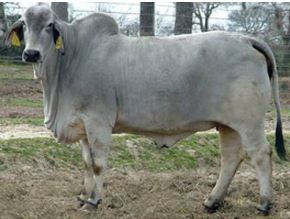



What Might it Take to Rebuild the Beef Herd?
ANALYSIS – Up to 30 per cent of heifers may have to be retained this year on some ranches as US beef embarks on a mission to rebuild breeding cow numbers.This will be around double the number for an average year, but farmers are advised to resist strong feeder prices and invest in their operations long term.
This is the message according to Texas A and M Beef Extension Specialist Dr Jason Cleere, who told TheCattleSite that producers are confident about the future and were looking at the big picture.
This follows consecutive widespread droughts exacerbating a long term herd decline since the 1970’s, contracting the US cattle and calf inventory to 89.3 million head - down from 96 million in 2007.
However, analysts are already seeing heifers kept back for breeding in response to 2013 yielding the lowest calf crop since 1949 and the smallest beef herd since 1951.
*
"Rain makes us all look smart...when grass is growing everybody looks like a better rancher."
But, despite concerted expansion efforts, Dr Cleere is doubtful that the herd size can recover to the numbers of ten years ago.
He listed rising labour, fertiliser and feed inputs as restraints on the sector.
Furthermore, record feeder prices, which economists expect to average $135/cwt liveweight this year, complicate producer options who may welcome a cash influx.
These values, up on a previous 2013 record of $126, are supported by strong demand, both in the US and overseas.
Dr Cleere said: “Barring a financial disaster or a war, this beef market should be good for many years to come.”
But, he also acknowledged that record markets, coupled with lower feed costs, may present challenges at weaning time.
“If you have a heifer that is worth $1,000 as a replacement, it is going to be worth more to you long term because of the calves it can produce,” stressed Dr Cleere.
As well as patience, Dr Cleere underlined moisture as vital for the recovery.
“Rain makes us all look smart,” said Dr Cleere. “When grass is growing everybody looks like a better rancher.”
Recalling recent dry summers, he said: “We still fear a drought because 2011 was horrible and many producers used up capital to survive.”
Heifer Selection
Importantly, Dr Cleere noted the massive variation across the US and in Texas alone. In his region, Brahman influenced cattle are found, remarkably different to the British Angus and Hereford crosses that dominate further north.
For this reason, he noted the importance of bos indicus influenced cattle, adding that these animals are resilient and have longevity.
“Down here we regularly see cattle being productive for 10-14 years,” he explained.

Dr Jerry Lipsey, formerly of Kansas State University and the American Simmental Association, is in agreement. He has told farmers that Bos Indicus/Taurine crosses can yield 50 per cent more pounds of calves weaned.
Speaking at the National Cattlemen’s Beef Association Annual Convention in Nashville earlier this month, Dr Lipsey said old herds are a sign of a profitable farm and that crossing cattle achieves cow longevity.
Regardless of how you benchmark productivity, Dr Lipsey said: “If you use breed combinations wisely, nothing is much better than heterosis.”
He also said that farmers handpicking heifers as long-term breeding stock can use the ‘calve early, born early’ rule.
First detailed in a Montana State study, Dr Lipsey said the maxim that calves born earlier tend to calve earlier as heifers is supported by many sources.
Bull Considerations
However, it is bulls which bring the most selection pressure and associate director of animal genetics at Zoetis, Dr Kent Anderson, suggested all-round heifer bulls are very much in demand this year.
This is because of the number of producers looking to expand heifer inventories.
But unfortunately, bulls that perform across the board tend to cost the most, he told the NCBA audience.
“Generally speaking, this is the case due to breeder to breeder trade and interest from semen companies,” he explained.
For ranchers looking to expand and develop heifer numbers, maternal traits and ease of calving could be vital, said Dr Anderson.
This means choosing bulls rated highly for maternal pregnancy and calving ease, as well as milk production and ability.
He reassured producers that bulls today were, ‘not the calving ease bulls your dad’s and granddad’s had.’
“They can deliver tremendous growth,” said Dr Anderson. “And result in little sacrifice across all other maternal and carcass traits.”
Dr Darrh Bullock, University of Kentucky Beef Breeding Specialist, has also spelled out the considerable variation in US cattle, this time in bulls.
He has told Kentucky producers to match up similar holdings to their own when buying a bull so it fits the operation.
Dr Bullock said: “If you are a low input manager, and your nutritional programme is limited, then you need to consider breeds that have more moderate production and thus lower maintenance requirements.
“On the other hand, if you have a great forage and nutrition programme, then more productive breeds may fit your situation better.”
Dr Bullock prescribed that a cost and return approach to bull investment can be assisted with a $100 rule.
“For every $100 increase in price you pay you should expect at least a $100 increase in return," he concluded.
Michael Priestley
News Team - Editor
Mainly production and market stories on ruminants sector. Works closely with sustainability consultants at FAI Farms



